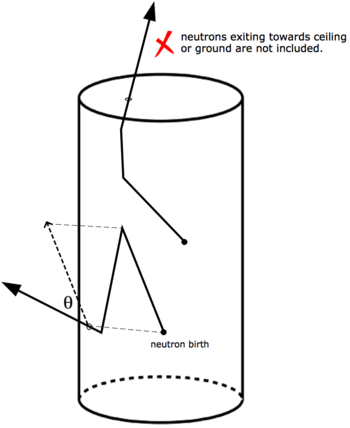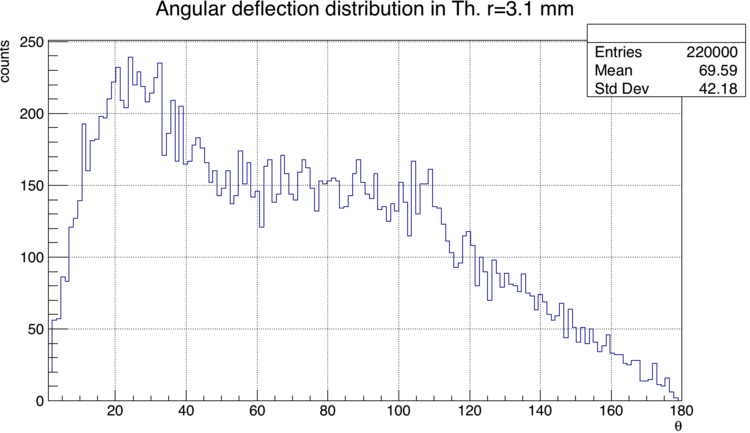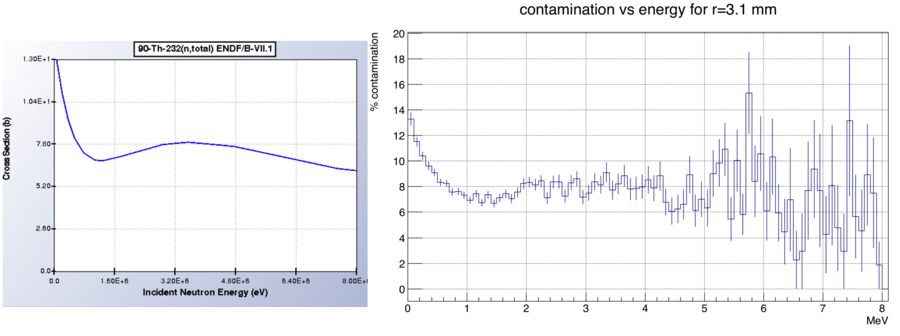Difference between revisions of "Elastic scattering"
| Line 13: | Line 13: | ||
[[File:Theta.png|750px]] | [[File:Theta.png|750px]] | ||
| − | Because of the high tendency of neutrons to scatter at sharp angles, my analysis simply considers all neutrons that scatter as contaminated data. Below and to the left is a plot of the total scattering cross section of Th-232. To the right | + | Because of the high tendency of neutrons to scatter at sharp angles, my analysis simply considers all neutrons that scatter as contaminated data. Below and to the left is a plot of the total scattering cross section of Th-232. To the right is the percent contamination of my simulation for r=3.1mm. All simulated neutrons are included in this plot, i.e. neutrons are not thrown away if they are traveling towards the ground or ceiling. |
[[File:Crosssection-contam2.png|900px]] | [[File:Crosssection-contam2.png|900px]] | ||
Revision as of 02:12, 23 December 2015
The simulation
Neutrons are generated uniformly within a cylindrical target with an energy sampled from a Watt fission spectrum. The angle between the direction that the neutron is traveling at birth and upon exiting the target volume is calculated. The figure below illustrates the angle that was calculated.
Neutrons that exit the target on a trajectory which will not intersect with a detector are not counted, e.g. neutrons going towards the ceiling or the ground.
Thorium-232
Out of the neutrons that did scatter in the target, at least 96% did so at an angle greater than 10 degrees. Below is the distribution of the angle of deflection for all the neutrons that did scatter. In this example, the target has a radius of 3 mm, and 8.2% of total simulated neutrons did scatter in the target.
Because of the high tendency of neutrons to scatter at sharp angles, my analysis simply considers all neutrons that scatter as contaminated data. Below and to the left is a plot of the total scattering cross section of Th-232. To the right is the percent contamination of my simulation for r=3.1mm. All simulated neutrons are included in this plot, i.e. neutrons are not thrown away if they are traveling towards the ground or ceiling.
Go back JB Analysis


